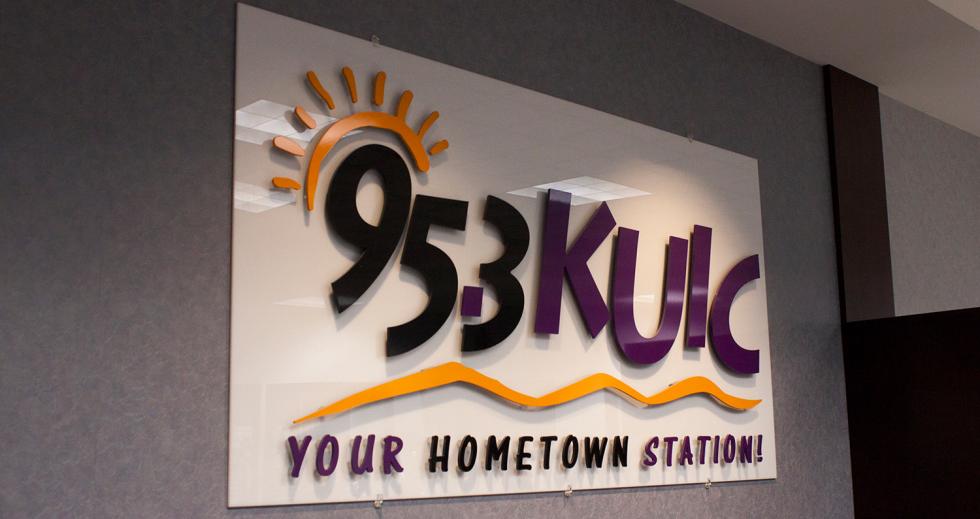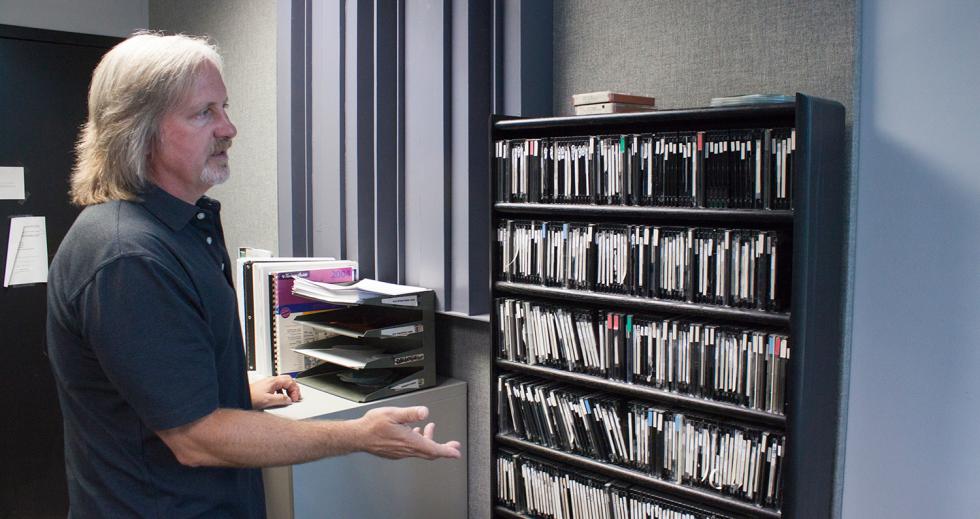On a crisp September morning, motorists across Solano County are on their way to work, school or the market. The soundtrack to their drive: two men yodeling.
John Young and Ron Brown, the morning show personalities at KUIC (95.3 FM) in Vacaville, make a pretty bold claim that the sounds are coming from them during an on-air promotion for an upcoming event. The sounds likely came from YouTube or SoundCloud or wherever morning show guys get their audio clips these days, that much is probably clear to anyone listening.
And people are listening. Despite the competition from streaming juggernauts, satellite radio and bigger stations in neighboring San Francisco and Sacramento, KUIC still manages to pull in around 200,000 listeners every week, says Phil D’Angelo, KUIC’s vice president and senior market manager. This includes many who tune in specifically to listen to Young and Brown banter like the two old buddies they are.
“If you live or work in this geographic community, there’s a good chance you’re going to hear KUIC,” D’Angelo tells Comstock’s. “You can’t get a haircut or a sandwich in this town without hearing us.”
Get more stories like this delivered to your inbox weekly: Sign up for the Comstock’s editorial newsletter by clicking or tapping here.
KUIC has been the little hometown station that could since the late 1960s, when it signed on as KVFS, a low-power station that barely covered Solano County. A partnership in 1973 acquired the station and transformed it into the full-fledged operation with the call letters it’s had since.
An acrylic display with the KUIC logo and “Your Hometown Station”
logo.

D’Angelo is aware listeners have more options than ever — people could hear those songs, and more, whenever they wanted, with both free and premium listening options at their disposal, some without the commercial interruptions that traditional FM radio brings. But he points out that recent market research shows 9 out of 10 adults listen to the radio — a higher reach than TV or smartphone media consumption.
Those statistics are popular with radio industry insiders who say claims that the format is “dying” in the face of streaming competition are unfounded. But statistics from the Pew Research Center show both are sort of true: Radio reached around 91 percent of Americans in 2017, according to the nonpartisan think tank, but the number of listeners has been on the decline since 2013 and the number of people turning toward streaming options, though low, is growing.
Still, radio dominates over streaming, especially in the car. Broadcast radio is typically the first thing that comes on in a car, particularly in older models that may lack newer features like online connectivity or Bluetooth. It’s easy to assume most motorists simply flip through the presets looking for something to hear if it means not having to fumble through smartphone settings to stream Pandora or Spotify to listen to music or a podcast.
But D’Angelo and Young think music is only one element that keeps people tuning into KUIC — and it’s a small element compared to the station’s other offerings. “Nobody can cover the area like we can,” D’Angelo says. “Nobody can talk about this community with traffic, with weather, with community events, with lifestyle, with the connection that we can.”
KUIC personality John Young describes a backup CD library full of
music played in rotation on the station.

Young says traffic is a huge driver for his morning show. Young, who lives in Roseville, commutes to Vacaville daily — and he said in the 20 years he’s been making the trip down Interstate 80, traffic has gotten worse. While other stations make a commitment to traffic during their morning and afternoon drive shows, KUIC airs regular traffic and weather updates throughout the day.
The result: Listeners have started tuning in from outside KUIC’s target geographic area. “The coverage area that we have as a listener is pretty cool … on a clear day, you can reach up to Echo Summit and Tahoe,” Young says. “But we also cover West Sacramento, we cover Davis, we cover Woodland.”
And to keep people tuning in, Young and other KUIC personalities regularly make trips to local businesses where they hand out coffee and donuts and engage with listeners. “We shake a lot of hands, and we actually connect with our listeners in a way that I don’t think a ton of stations in either the Sacramento market or San Francisco market do,” Young says.
D’Angelo says engaging with listeners, especially in Solano County, is central to the company’s identity: Many residents, he says, don’t identify with being from Sacramento or San Francisco — so the station doesn’t identify itself based on those cities, either.
“KUIC had already done local hometown radio for many years, but they weren’t taking credit for it on the air,” D’Angelo says. That changed in the mid-1990s, when the station went through a major rebranding that placed a heavy emphasis on being local. It even changed its slogan to “Your Hometown Station” to better communicate to listeners that it was right there with them.
The strategy has, so far, worked. It has also kept KUIC’s relatively new corporate owners, Portland-based radio group Alpha Media, from making changes after the company acquired it and two Bay Area sister stations in 2015.
“They liked the way it was being run … it appealed to them, they came in and said, looks pretty good,” Young says, adding that KUIC has proved so resilient to shifting trends in the media industry that Alpha Media has since applied elements of the Vacaville outlet to some of its 95 other stations across the country.
One reason Alpha Media may like KUIC is because it continues to draw advertising dollars, according to D’Angelo — nothing compared to what a bigger station in a bigger market might make on a bad day, but still enough to keep the lights on and have a nice chunk left over. Another thing that keeps the Portland company happy: When people sign up to work at KUIC, they tend to stay for a long time.
“It’s a special station to work for,” Young says. “It’s very family like. Some of the team Phil assembled (when he started nearly 20 years ago) are still here. Even though we’re owned by a corporate entity, we’re proud to be an Alpha Media station, these people (at KUIC) have always felt like my friends. You can stamp out issues quickly, you can change course quickly, you can rebrand quickly, because everybody gets along.”
And that family-like atmosphere has a residual effect across the station — local listeners feel like they know Young and Brown as friends, and D’Angelo is able to approach potential advertisers with a friendly informality that is starting to disappear in other places as small communities become larger. It’s the kind of atmosphere that draws accolades from peers who notice KUIC from afar.
“I find that when I talk to colleagues in Sacramento or San Francisco, they usually have something good to say about KUIC,” Young says. “They like the way we do business.”
—
Media File is a new monthly series examining media in the Capital Region. If you have a story worth sharing, email tips to mkeys@comstocksmag.com with the subject line “Media File tip.”




Comments
I’ve been a fan for many years. That morning show KILLS it every morning